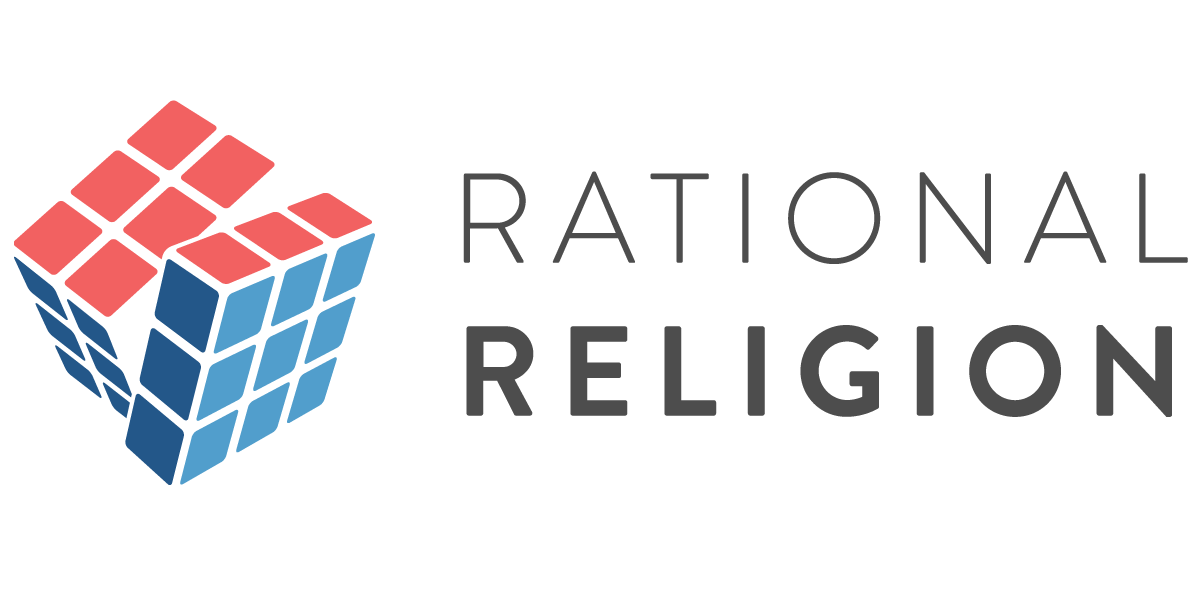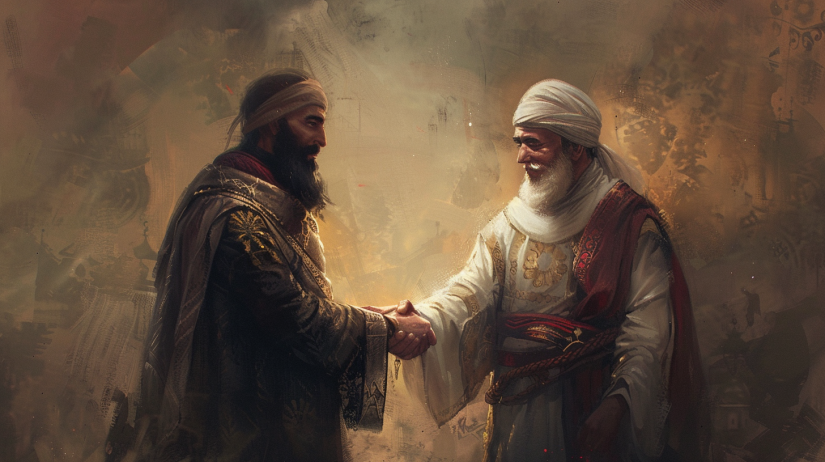Abdulhaq Compier MD
‘I have read, dear fathers, in the works of the Arabs, that when Abdala the Saracen was asked what in the world, so to speak, we can most marvel at, he replied that there is nothing so admirable as man.’
— Pico della Mirandola, Oration on the Dignity of Man, 1486
Nowadays, the term humanism has come to mean ‘a rationalist outlook attaching prime importance to human rather than divine or supernatural matters’.[1] Such definitions seem to imply that a rational and humane outlook would not attach importance to the Divine, which we will argue is an omission. But even the definition of humanism as a philosophical outlook set against a religious one, is a twentieth century appropriation of the term. In this article you may be surprised to find that humanism originated as a set of disciplines and ideals sprouting from the religion of Islam, which were adopted in Europe and became the driving force behind the European Renaissance. I will also show that in a bizarre campaign of cultural ethnic cleansing, Islam was removed from the picture of what humanism is about and where it came from.
To save the soul of contemporary humanism, I will argue, we must acknowledge the Islamic values from which humanism once sprouted.
The Mystification of the European Renaissance
Many in their high school years are taught the mysterious phenomenon of the Renaissance, being a light suddenly illuminating the Dark Ages by the accidental discovery around 1500 of some Greek manuscripts. These manuscripts are said to have caused a rebirth of a culture of two millennia ago, which then became the basis of modern civilisation. The humanist movement was the driving force of the Renaissance, and shares in this mystery. Roberto Weiss, in ‘The Dawn of Humanism in Italy’ called humanism ‘a spontaneous and natural development’.[2]
Sem Dresden stated in ‘The Profile of the Reception of the Italian Renaissance in France’, that ‘we may regard Italian humanism and the Renaissance of the fifteenth century as a self-contained whole which developed on its own accord, more or less independently from the outside world’.[3]
Historian George Makdisi Makdisi (USA, 1920-2002) however, argues in his revolutionary study ‘The Rise of Humanism in Classical Islam and the Christian West’ that Western historians paid too little attention to the influence of the Arab humanist movement called ‘Adab’ which already flourished on Europe’s borders for centuries.

Portrait of Ferdinando II de Medici Dressed in Oriental Costume. Ca. 1640, by Flemish artist Justus Sustermans (1597-1681)
Arab Humanism
The sciences are three in number: one that exalts, one that is useful, and one that adorns. The one that exalts is religious law; the one that is useful is medicine; and the one that adorns is Adab. — Tauhidi (d. 1009) [4]
Arab humanism came into being from values innate to the religion of Islam. One set of values pertains to the protection of the Arabic language, and another to the acquiring of skills and knowledge to attain to Islamic ideals of character, knowledge and virtue.
To save the Qur’an and the Hadith (traditions of the Prophet) from the confusion in meaning that might occur through the absence of vowels in the Arabic script, Abu al-Aswad ad-Du’ali (d. 688), a companion of the Caliph Alira, developed the diacritics for the Qur’an and was the first to describe an Arabic grammar and the grammatical cases nominative, accusative and genitive.[5] Lexicography emerged as a discipline to understand and preserve the original meanings of Arabic words.[6] Arab lexographers spent years among isolated Arab tribes to document Arabic words and their original meanings.[7]
The art of dictating texts also developed in connection with the study of the Quran and Hadith. The art of dictation became known as Amâlî.[8] The linguistic studies developed into a culture of learning in general, which came to include studies from other cultures as well, like Persia, Greece and India, honouring the Holy Prophet’ssa commandment to ‘seek knowledge, even if you have to travel to China’. The core disciplines of Adab became grammar, lexicography, poetry, rhetoric, religious studies, moral philosophy and ‘useful sciences’ for body and mind, such as history and medicine.[9]
These studies became the practical embodiment of the Qur’anic ideal of eloquence (Al-Bayân, in verse 55:5).[10] The ideal of intellectual and religious education became known as ‘Adab’; meaning as much as sophistication, education and erudition. The Muslim saint Hasan al-Basri (d. 728) described the Adab ideal as follows: ‘Learn the religious law for the benefit of your religion; medicine, for the benefit of your body; and grammar for the benefit of your tongue’.[11]
This culture of study and scholarship developed from the Caliphate of Alira and reached a climax in what has been called the Islamic Golden Age, a period of five hundred years between 800-1300. This is a long period of time, for comparison, the modern world also exists around five hundred years today.

The Adab Way of Life
Century after century, Adab was truly a way of life in the Muslim world. The disciplines of Adab were taught in mosques, libraries, book shops, schools, homes, and even in the outdoors, by lexicographers, grammarians, physicians, jurisconsults, notaries, calligraphers, librarians and secretaries. Adab scholars would spend years traveling for knowledge. One of the many examples of Adab scholars mentioned in Makdisi’s book is the tenth century Al-Qali. Born in the region of Diyar Bakr in Anatolia in 893, he went to study Adab in Iraq; at first in Mosul in 915, and two years later in Baghdad. He studied under the great scholars of his day. Over two decades later, when he had finished his studies, he left Baghdad for Cordova, arriving in 942; and there he settled until his death in 967. It was in Cordova that he summarized all the knowledge he had collected in his Dictations, from the Introduction of which the following lines are translated:
‘Seeing that knowledge is the most precious merchandise, I knew for certain that setting out in search of it would be the best kind of commerce. I therefore left my homeland to hear knowledge transmitted, and I clung to the scholars in order to understand it. Then I busied myself in collecting it, and worked my intelligence in memorising it, until I had gathered the most significant part of it, preserving its refinements, transmitting its splendours, knowing its subtleties, understanding its anomalies, passing on its rarities, perceiving its obscurities, and learning its lucidities. I then dictated this book from memory on Thursdays, in Cordova, in the Mosque of the Blessed Shining City, az-Zahra’.
The Moral Art of Government
The sophisticated and erudite men, called the ‘Ahl al-Adabiyya’ became advisors to the rulers on the moral conduct of government:
‘Adab exists in an atmosphere of grandeur and urban elegance. Its world is that is that of kings and ministers, chancellors and high functionaries, adepts and lovers of the language arts, held in high honour in the royal court, where wit and repartee, elegance of dress and eloquence of speech are the coin of the realm’.[12]
The Palazzo dei Normanni in Palermo, then and now the seat of Sicilian government, was built by Muslims, enlarged by Roger II, and became the court of Emperor Frederick II.

The Palazzo dei Normanni in Palermo, then and now the seat of Sicilian government, was built by Muslims, enlarged by Roger II, and became the court of emperor Frederick II.
Spirituality and Secularism
The field of Adab encompassed vast areas of knowledge, from grammar to moral philosophy and medicine. To counter the contemporary presumption that humanism signifies a movement away from religion, I will make mention here of the ‘Academic Sermon’ which was a major source and podium in the field of moral philosophy. The scholar Ibn al-jauzi compiled a list of notable preachers which included the Prophet (sa) himself, his Caliphs, jurisconsults, Hadith scholars and mystics. Junaid al-Baghdadi (830-910) for example, was a well-known mystic, epistolographer and jurisconsult who is included in the list of preachers.
The large body of religious scholars and mystics notwithstanding, some scholars did deviate from religious practice. Ibn al-Jauzi recounts that after passing away, the grammarian Ibn al-Kashshab (d. 1172) was seen by his disciple Al-Katib al-Isfahani in a dream. Al-Isfahani asked his former master how God was treating him. ‘He forgave me’, said Ibn al-Kashshab. ‘Did he allow you to enter paradise?’. ‘He allowed me to enter Paradise, but He turned away from me’. ‘He turned away from you?’. ‘Yes, and from a group of scholars who forsook practising what they knew.’[13]
A serious conflict within the scholarly world occurred in what has been called the ‘Mihna’, or inquisition, in which the philosophical school of the Mu’tazilites convinced the Caliph Al-Ma’mun (768-833) to persecute orthodox scholars such as Imam ibn Hanbal. This prompted the establishment of the schools of law as a way to protect the religion.
The adoption of humanism in Europe
Sicily was governed by Muslims from 827, and was then conquered by the Normans in 1085. The Norman king Frederick II (1194-1250) was emperor of the Holy Roman Empire and was called the ‘Stupor Mundi’, the Wonder of the World. He organized his entire court, government and economy ‘on the Muhammadan model’, including Adab secretaries and advisors. Piero del la Vigna, considered one of the early humanists, was his secretary.[14] Arabic works on Adab were translated into Latin, such as the Liber Philosophorum (Mukhtâr al-Hikam) of Mubashir ibn Fatik (d. 1043), the Disciplina Clericalis (Adab al-Kâtib) by Abdallah ibn Qutaibah (d. 889) and Secretum Secretorum (Sirr al-Asrâr) written by an unknown Arab humanist who ascribed it to Aristotle.
These came to inspire European humanists such as Pico della Mirandola and Roger Bacon. Adab culture was brought to Europe also through trade contacts.[15] From the thirteenth century, Islamic virtues of generosity, dignity and pride became popular ideals in Italy, which people associated with sultan Saladin, the noble opponent of the Crusaders.[16]
Frederick II, the ‘wonder of the world’, bust, ca. 13th century; in the collection of the Museo Provinciale Campano, Capua, Italy.
Humanist Disciplines in Europe
Among European humanists we see an integral adoption from Arab Adab of disciplines, ideals, academic culture, methodology, and terminology. The five basic disciplines of the ‘studia humanitatis’, the humanist sciences, were taken directly from the culture of Adab:[17]
| Studia Adabiya | Studia Humanitatis |
| Nahw | Grammar |
| Khatba | Rhetoric |
| Shi’r | Poetry |
| Tarikh | History |
| ‘Ilm al-Akhlaq | Moral Philosophy |
The Arab humanists dictated Arabic texts as a necessary consequence of the Arabic language. Although Latin may not have necessitated this, Latin humanists still adopted the art of dictation (Ars Dictaminis) as a distinctive humanistic discipline. Features such as the inkwell and the notebook became symbols in European humanism as they had been in Arabic Adab.[18]
Humanist Ideals
Islam has a special combination in its values of unity, of the Muslim Ummah, on the one hand, and on the other hand recognition of the individual human being in his personal relationship to God – even as a reflection of Him. This relationship was not, as in Catholicism, mediated by priesthood. Historian Jacob Burckhardt states, ‘… the Arab had considered himself an individual at a time when other Asiatics knew themselves only as members of a race’.[19] As Muslim culture grew, individualistic ideals became more clearly established, such as ‘farid dahrih‘ and ‘nasidj wahdih’, (the unique human being) which were adopted by Latin humanists as ‘uomo singulare’ and ‘uomo unico’. The ideal of versatility (tafannun)[20], would translate into the well known ‘uomo universalis’. ‘The scholar who acts on his words’, al-‘âlim al-‘âmil, translated into ‘loquandi faciendique humanista’.[21] Another is the ideal of being the best and first (Arabic: hâdhâ shai’un lam usbaq ilaih: ‘this is something that no one before me ever did’).[22]
Furthermore, there was a culture of debating opponents with irony (something that was done by Arab doctors, among others) and the genre of the historical biography (regarded by Burckhardt with ‘eternal gratitude’ as ‘the moment when the concept of humanity became a fact’[23]). To illustrate the influence of Arab humanism on the development of humanist ideals in Europe, Pico della Mirandola’s ‘Oration on the Dignity of Man’ (1486) begins with a quotation from the aforementioned author of the Adab al-Kâtib (translated as Disciplina Clericalis), Abdallah ibn Qutaibah (d. 889):
‘I have read, dear fathers, in the works of the Arabs, that when Abdala the Saracen was asked what in the world, so to speak, we can most marvel at, he replied that there is nothing so admirable as man’.[24]
It is illustrative that only after mentioning the Arabic view, Della Mirandola confirms it with a quotation from a Greek source: ‘Hermes Trismegistus concurs with this opinion: ‘A great miracle, Asclepius, is man!’.[25]
Humanism a classical Latin and Greek discipline?
Part of today’s myth about the Renaissance is that everything about Western civilisation goes back to ancient Rome and Greece. But to propose texts from civilisations two millennia in the past could have sparked modernity, while the Muslim world as a contemporary neighbour with all aspects of humanism flourishing, including the reading of Greek texts, would not have contributed a thing, obviously goes against all odds. How then did this idea come into being? The answer is, that the European Christians desired to create a culture like that of Arab humanism, but distinct from Islam. And unfortunately, in a way very unbefitting the definition of humanism being the studies from all human civilisations, tried to eradicate the Arab identity from the culture of humanism they adopted.
A ‘Sense of Inferiority’
Both George Makdisi and William Montgomery Watt describe ‘a sense of inferiority’ of Christians towards Arab-Islamic culture, which ultimately prompted Christian humanists to form their identity in opposition to Islam.[26] An illustration of this is the complaint of the 9th century Spanish Christian Alvaro:
‘My fellow Christians delight in the poems and romances of the Arabs; they study the works of Islamic theologians and philosophers, not in order to refute them, but to acquire a correct and elegant Arabic style. Where today can a layman be found who reads the Latin commentaries on the Holy Scriptures? Who is there that studies the Gospels, the Prophets and the Apostles? Alas! The young Christians who are most conspicuous for their talents have no knowledge of any literature or language save the Arabic: they read and study with avidity Arabic books; they amass whole libraries of them, at vast cost, and everywhere they sing the praises of Arabian lore. On the other hand, at the mention of Christian books, they disdainfully protest that such works are unworthy of their notice. The pity of it! Christians have forgotten their own tongue, and scarce one in a thousand can be found able to compose in fair Latin a letter to a friend! But when it comes to writing Arabic, how many there are who can express themselves in that language with the greatest elegance, and even compose verses which surpass in formal correctness those of the Arabs themselves!’ [27]
Before Arab humanism introduced the study of other civilisations like Greece, the Christians would not necessarily have felt a connection with the classical authors who were, after all, not Christian but pagan in their religion. Indeed the classics were not deemed much in Europe for centuries which is illustrated by the fact that many classical texts have survived only as Arabic translations. However, when Christians adopted humanism, they saw how Muslims successfully included the classics in their humanist culture. Perhaps because of the geographical location of Italy, having been the centre of the Roman Empire, or Latin being the language of the Catholic Bible and the Gospels having been written in Greek, Christian humanists started imagining there to be a connection between them and the classical authors. In the words of William Montgomery Watt:
‘… Europeans were attracted to Aristotle, not simply by the inherent qualities of his philosophy, but also by the fact that he belonged in a sense to their own European tradition. That is to say, the assignment to Aristotle of a central position in philosophy and science is partly understood as one aspect of the European assertion of distinction from Islam. The purely negative activity of turning from Islam, especially when so much was being learnt from Arab science and philosophy, would have been difficult, if not impossible, without a positive complement. This positive complement was the appeal to Europe’s classical (Greek and Roman) past’.[28]
The early Italian humanist Petrarch (1304-1374) wrote poems according to the principles of Arabic poetry,[29] but at the same time struggled to distance himself from Islam and made his life’s work glorifying classical Rome.[30] Dante Alighieri (Sicily, 1265-1321), in his famous Divina Commedia, tells the story of a journey through heaven and hell, inspired by Sufi accounts of the Ascension of the Prophet Muhammad.sa
The work influenced Christianity even to the extent that the concept of Purgatory was adopted by the Catholic Church.[31] Despite the strong influences – or indeed because of them – Dante not only remains silent about his sources of inspiration, but even pictured the Prophet Muhammadsa in the deepest corner of Hell. The aforementioned Pico della Mirandola at one point wrote: ‘For heaven’s sake, let us have Pythagoras, Plato and Aristotle, and keep your Omar, your Alchabitius, your Abenzoar, your Abenragel!’[32]
Turning towards classical Latin
The Latin humanists chose the classical Latin of centuries ago to become their lingua franca. This was a language not spoken by anybody anymore as it had developed into vernacular Latin. George Makdisi observes:
‘The question arises, why then did the humanists of the Italian Renaissance insist on eloquence in classical Latin? Why were they not swayed by the strong plea which Dante made for vernacular eloquence in his De Vulgari Eloquentia? Why were they insensitive to the eloquence of the Divine Comedy, where Dante had so magisterially put his thesis to the test? They even suggested he rewrite that eloquent work of genius in classical Latin. The only answer I have, for this less than normal attraction toward a language not one’s own, is that there must have been an irresistible urge to answer the challenge of classical Arabic with an equally classical language’.[33]
The ethnic cleansing of humanism
The sixteenth century is the time when the Renaissance is thought to have truly come to life, but also the time when the Spanish Inquisition burned heretics at the stake. From early in this century, Latin humanists started a cleansing campaign with aggression not unlike the Spanish Inquisition, to remove Arab words and authors from the world of science. Historian Nancy Siraisi observes that by 1530, ‘the role of the Arabs was a central issue in debates over the reform of medicine’, creating ‘an intellectual climate in which hostility to the Arabs had become a shibboleth of modernism in medicine’.[34] Polemical pamphlets were published with such titles as ‘… Against Neoteric Physicians Who, Neglecting the Discipline of Galen, Cultivate the Barbarians’ (1533). Hardliners started to talk of the ‘tyranny’ of Avicenna and of Arab ‘occupation of the schools’. [35] Leonard Fuchs, a professor of medicine in Paris, wrote in his ‘Institutions of Medicine’:
‘It is best to reject the Arabs completely and just to abandon them, the barbarians of a bygone age, and – as if one drinks water from the purest spring – to start studying the writings of the Greek physicians, who have passed on the art of medicine in its most pure and incontaminated form and by the most reliable of methods, all that is required for the medical practice. As everything in the teachings of the Arabs is dirty, barbaric, contaminated, complicated and littered with the worst of errors, likewise all that is Greek is clean, clear, brilliant, lucid, transparent and uncontaminated … The Arabs have nothing which they did not borrow from the Greeks, except for the mistakes which only they make’.[36]
A portrait of Leonard Fuchs, who criticised Arabs fiercely
Virtually all the scientific work of Arab and European scientists of centuries was discarded and replaced by the ‘originals’ Hippocrates and Galen. Every innovation was regarded as a stain on the pure knowledge of the Greeks. This did not result in the prosperity that was expected. As has been rightly pointed out by Lester King:
‘The humanists who condemned scholastic authority and domination of the church, themselves bowed before an equal tyranny – the authority of the ancients’[37]
As the glorification of the Ancients impaired scientific progress, a ‘Scientific Revolution’ had to take place to liberate empirical science from authoritarian humanism.[38] At the same time, from the middle of the sixteenth century, scholars gradually returned to the reading of the Arab classical works in science; indeed the Canon of Avicenna was read in Europe well until the end of the nineteenth century. But the fanatical celebration of classical culture had now established the myth that the classics had been the cause of Europe’s awakening. Whenever in the future any progress would be made, popular belief would praise classical Greek authors as having been the inspiration, even if the progress was made on the basis of research done by Arabs. The myth of revived antiquity received a stimulus in the nineteenth century and is a view that ‘has become widespread in later European historiography, even into the 20th century’.[39]
The Danish humanist Melchior Lorch could by the second half of the sixteenth century again place Arabic among the prime languages in the sciences, as shown by this impression of Aristotle dated 1561. Source: Sievernich, Europa und der Orient, Bertelsmann 1989.
The name ‘humanism’
In 1369, Coluccio Salutati (1331–1406), read the text Pro Archia, in which Cicero calls the studies that contribute to the development of human character as ‘studia humanitatis’. From then on, European scholars started referring to the disciplines of Adab (grammar, lexicography, history and moral philosophy) as Studia Humanitatis. Some time later, someone who studied these disciplines was called a ‘umanista’.[40] This way of referring to a set of studies is still in use today as ‘the humanities’. It should be noted that the term ‘humanism’ was not in use until the nineteenth century, I will return to that in the last chapter.
The Arab world also used a term Ulum al-Insaniyya, which literally translates as Studia Humanitatis. The scholar Al-Kindi (801-873) used the term to distinguish the studies of ‘the rest of mankind’ like Greece and India from the Ulum al-Arabiyya, the ‘Arabic studies’.
The world of Adab also used the term ‘humanity’ to signify how all men are one tribe linked by their common humanity, as taught by the Quran.[41] Another meaning of the term insaniyya shows the Islamic ideal of learning, as in ‘realising the end or perfection of man qua man’.[42] It can be said that these comprehensive meanings of insaniyya even better represent the soul of humanism than Cicero’s Pro Archia.
Saving humanism’s soul
The Second Humanist Manifesto of 1973 says, ‘Humanism traces its roots from ancient China, classical Greece and Rome, through the Renaissance and the Enlightenment, to the scientific revolution of the modern world’.[43] How China with no geographical or cultural connections to Europe would be included in the history of European humanism, but not the world of Islam with centuries of cultural interactions with the West, indeed boggles the mind. I will argue here that exactly this omission is the reason why contemporary Humanism has lost its soul and is failing humanity both in its quest for meaning and morality.
A great problem with the term ‘humanism’ is that its contemporary use is not the product of historical understanding of humanist culture, nor a philosophical deliberation about what it means to be human. It is instead the product of the socio-political struggles of the Western world of the nineteenth and twentieth centuries. The mobilisation of the term ‘humanism’ to serve atheism happened gradually starting from the nineteenth century ‘Ethical movement’, in an attempt to create an alternative for Christianity because of its moral shortcomings. Twentieth century movements identifying as Humanist were motivated by the struggle with Christianity at first, and then by a struggle to cope with the atrocities of Nazism, Communism and weapons of mass destruction.
The first Humanist Manifesto of 1933 recognized religions to ‘have always been means for realizing the highest values of life’, but expressed a need to create a new religion adapted to new concepts like the theory of evolution and the apparent meaninglessness of our place in the vast universe.[44] The second Humanist Manifesto of 1973 was born from despair; since the first Manifesto, neither God, nor human efforts saved humanity from the brutality of Nazism, totalitarian regimes, inhumane wars in the name of peace, police states, unyielding racism and suppression of women. ‘No deity will save us; we must save ourselves’, it is exclaimed in the Manifesto.[45]
The third Manifesto of 2003 defines Humanism only in opposition to ‘supernaturalism’, but otherwise says not to manifest ‘what we must believe’, but ‘a consensus of what we do believe’ and is free from specific attacks on religion.[46] It is obvious that these movements born from contemporary struggles are far from the culture of the Studia Humanitatis, although they do present themselves as their legitimate heir. In the words of historian R. Joseph Hoffmann:
‘I regard the use of the term ‘humanism’ to mean secular humanism or atheism to be one of the greatest tragedies of twentieth century movementology, perpetrated by second-class minds and perpetuated by third-class polemicists and village atheists. The attempt to sever humanism from the religious and the spiritual was a flatfooted, largely American way of taking on the religious right. It lacked finesse, subtlety, and the European sense of history.’ [47]
It is important to remember the Islamic roots of humanist culture and, as such, of modern civilisation. The reasons for this are historical, social and ideological. Historical, to have a proper understanding of history and, our culture claiming to be one of facts and not of fairy tales, not to be satisfied with a myth about the very foundations of our own civilisation. Social, to enable Muslims living in the West to experience their religion and culture to be part of the culture of the society they live in. This will facilitate them to integrate and contribute positively to society.
Ideologically, it is vital to remember the Islamic roots of humanism to save humanism’s soul. The point of education in Islam is because it brings one closer to God and perfects one’s character. Furthermore, the love for beautiful and correct language, the appreciation of literature, the moral art of government, the appreciation of knowledge not just from one’s own culture, but from all cultures – all are virtues coming from the religion of Islam.
The Arabic language and its calligraphy is extremely beautiful in its essence
Christianity, because of the irrationality of its dogma, its little regard for society and its exclusivist view on salvation, has always been at odds with science and learning and it comes as no surprise that as the culture of science progressed in Europe, it separated itself from Christianity. Perhaps remnants of ideals from ancient Greece or regard for erudite scholarship still maintained a position for education for some time, but it seems that the ideals have been taken out of the culture of education completely nowadays. With no higher purpose for it, humanism will be driven into the jaws of neo-liberalism, where virtue is something foolish, knowledge is at best a political tool, truth is relative and education is just a preparation for economic production.[48]
Without its roots firmly in the ground, the tree of humanism will be washed away in the deluge of passions stirred in contemporary society: hatred, ignorance, greed, laziness, superficial pleasures.
To allow Islam to be part of Western civilisation by appreciating its historical role in the formation of modern virtues, and by adopting a sense of divine purpose in handing these virtues down to future generations, will be what contemporary humanism needs in its restless search to fill the voids in its vision. To be sure, Islam as explained by the Promised Messiah (as) at the start of the twentieth century was the ‘new religion’ Europe needed at the time of the First Humanist Manifesto in 1933. It could have saved humanity from two perplexing world wars, and it could indeed still save it from the third.
Literature & References
— George Makdisi, The Rise of Humanism in Classical Islam and in the Christian West. Edinburgh University Press, 1990
— William Montgomery Watt, The Influence of Islam on Medieval Europe. Edinburgh University Press 1972
— Joel L. Kraemer, Humanism in the Renaissance of Islam, Brill Leiden 1986
[1] Google result from Oxford languages.
[2] George Makdisi, The Rise of Humanism in Classical islam and the Christian West, Edinburgh University Press 1990 (cited further below as Makdisi 1990); 296
[3] Makdisi 1990; 296
[4] Makdisi 1990; 96.
[5] Makdisi 1990; 121-122
[6] George Makdisi, Humanism and Scholasticism in Classical Islam and the Christian West, Journal of the American Oriental Society, 1989 (cited further below as Makdisi 1989); 179
[7] Makdisi 1990; 99, 133
[8] Makdisi 1990; 215-216, 324-326
[9] Makdisi 1990; 121-122
[10] Makdisi 1990; 141-143
[11] Makdisi 1990; 122
[12] Makdisi 1990; 92
[13] Makdisi 1990; 115
[14] Makdisi 1990; 303, 329, 330
[15] Makdisi 1990; 353
[16] Makdisi 1990; 308
[17] Makdisi 1990; 323
[18] Makdisi 1990; 213
[19] Makdisi 1990; 304
[20] Makdisi 1990; 269-270
[21] Makdisi 1990; 351
[22] Makdisi 1990; 305
[23] Makdisi 1990; 307
[24] Makdisi 1990; 353
[25] https://brians.wsu.edu/2016/11/14/pico-della-mirandola-oration-on-the-dignity-of-man-15th-c-ce/
[26] W.M. Watt, The influence of Islam on Medieval Europe, Edinburgh University Press 1972 (cited further below as Watt 1972); 79. And Makdisi 1989; 175-182
[27] Makdisi 1990; 330
[28] Watt 1972; 82
[29] María Rosa Menocal, Shards of Love: Exile and the Origins of the Lyric. Duke University Press, 1994
[30] Nancy Bisaha, Petrarch’s Vision of the Muslim and Byzantine East. Speculum Vol. 76, No. 2 (Apr., 2001), pp. 284-314; 292-293, 307-308
[31] The Prophet Muhammad (peace be upon him) offered the unique teaching that Hell is a means to purify the souls of sinners, after which they are all allowed to enter Paradise. This teaching was continued by the Muslim mystics; Dante was probably influenced by the writings of Muhyuddin ibn Arabi (1165-1240) (see Miguel Asin Palacios, La escatologia musulmana en la Divina comedia. Madrid: E. Maestre, 1819). The Catholic concept of Purgatory is a partial adoption of the Islamic teaching, in which forgiveness is allowed only for moderate sinners.
[32] Watt 1972; 80
[33] George Makdisi, ‘Humanism and Scholasticism in Classical Islam and the Christian West’, Journal
of the American Oriental Society, 1989:2, 175-182; 181
[34] Nancy Siraisi, Avicenna in Renaissance Italy: The Canon and Medical Teaching in Italian Universities after 1500. Princeton: Princeton University Press, 1987; 74.
[35] Nancy Siraisi, Avicenna in Renaissance Italy: The Canon and Medical Teaching in Italian Universities after 1500. Princeton: Princeton University Press, 1987; 66-77.
[36] Leonhard Fuchs, Institutionum medicinae sive methodi ad Hippocratis, Galeni aliorumque veterum
scripta recte intelligenda mire utiles libri quinque. Lugduni: Apud Thomam Guerinum, 1555. See also
Pormann & Savage Smith. Medieval Islamic Medicine. Edinburgh University Press, 2007; 169
[37] L.S. King, ‘Humanism and the Medical Past’, In J.P. Mc Govern and C.R. Burns (eds), Humanism in
Medicine. Springfield: Charles C Thomas 1973; 9
[38] I published about a case in point, the liberation of 16th century anatomist Andreas Vesalius from authoritarian humanism and the support he felt from the 9th century doctor Zakariya ar-Razi. Abdul Haq Compier, Rhazes in the Renaissance of Andreas Vesalius. Medical History, Cambridge University Press 2012; 3-25
[39] Pormann & Savage Smith. Medieval Islamic Medicine. Edinburgh University Press, 2007; 169. See also Watt 1972; 84
[40] Eric Adler. The Battle of the Classics: How a Nineteenth-Century Debate Can Save the Humanities Today. Oxford University Press 2020; 33
[41] ‘O mankind! Fear your Lord, Who created you from a single soul’ (4:2) and ‘follow the nature (fitra) made by Allah – the nature in which He has created mankind’ (30:31)
[42] Joel Kramer, Humanism in the Renaissance of Islam, Brill Leiden 1986; 10
[43] https://americanhumanist.org/what-is-humanism/manifesto2/
[44] https://americanhumanist.org/what-is-humanism/manifesto1/
[45] https://americanhumanist.org/what-is-humanism/manifesto2/
[46] https://americanhumanist.org/what-is-humanism/manifesto3/
[47] Citation taken from the well-informed Wikipedia page on ‘Secular Humanism’. https://en.wikipedia.org/wiki/Secular_humanism
[48] Eric Adler calls the humanities in the 21st century ‘the Sick Man of Education’. In: The Battle of the Classics: How a Nineteenth-Century Debate Can Save the Humanities Today. Oxford University Press 2020; 1















